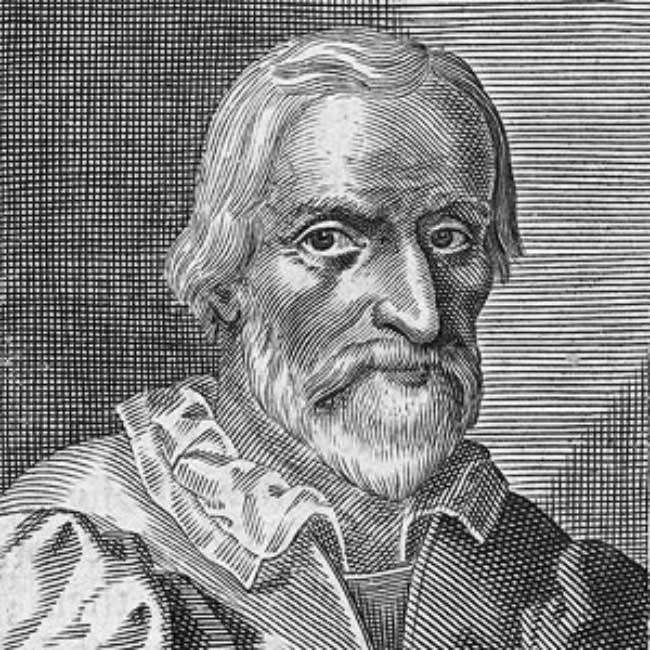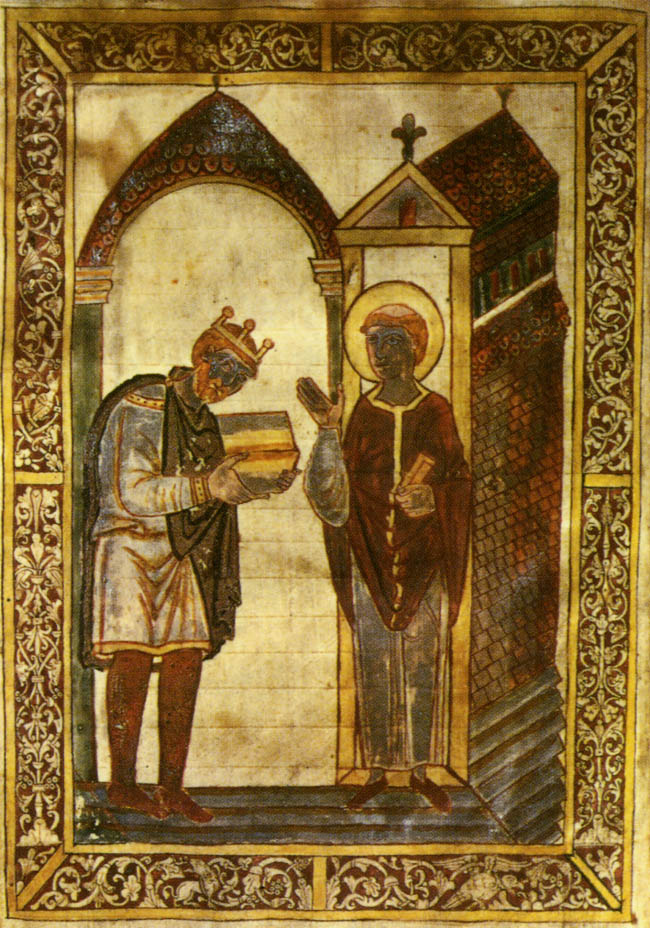How St. Bede Paved the Way for the Restoration
The Venerable Bede was born in 672 or 673 AD . At age seven, Bede’s family entrusted him and his education to Benedict Biscop, founder of the Monkwearmouth monastery in Northern England. He ultimately spent the rest of his life in the monastery. Bede entered the clergy by being ordained a deacon at 19. He chose to be ordained a priest at age 30 like Jesus Christ. Bede died at the monestary on Ascension Day, Thursday, 26 May 735.
The monastery’s vast, diverse library impacted Bede. Quickly evident, his literary genius led him to become author, notary, and scribe. Bede wrote his first educationally based works De Arte Metrica and De Schematibus et Tropis in 701. His prolific writing period spanned 33 years and included 60 books, many still extant. 
Through his five volume history entitled The Ecclesiastical History of the English People, Bede became known as the Father of English history. Additionally, his writings include:
- A calculation to determine the correct day to celebrate Easter.
- The first historical work to use the AD dating system.
- Explanations on how the spherical earth affected seasonal daylight and lunar cycles.
- Explanations of the quantitative relationship between the moon and tidal cycles.
- Calculations of the earth’s age (3952), which was considered heretical initially.
- First usage of a footnote system, to avoid subsequent charges of heresy.
Mormons believe that throughout the ages, God inspired men and women and endowed them with divine gifts to champion His earthly work. After the Apostles’ demise, the true doctrines of the church faded or were embellished because people couldn’t access God’s word. As accessibility increased throughout the centuries, people could approach God for themselves. Accessibility enabled personal relationships with the scriptures and Deity. Saint Bede’s divine gifts advanced the work of God which culminated in the restoration of the Lord’s Church in 1830 complete with prophets, priesthood, and ordinances. Bede wrote from spiritual eyes and profoundly influenced Christianity. God continues to hasten His work today.
Sharing the Doctrine
Apparently local clergy were few and far between in rural, newly Christianized Northern England in the 700’s. Even when found, most clergy did not know or understand Latin. Bede urged everyone (clergy or layman) to learn multiple languages, so they could read the scriptures from source documents. Bede emphasized that clergy should at least know the Pater Noster (The Lord’s Prayer) and the Creed in Latin, but felt the rest of the Gospel message could (and should) be shared in the local tongue. One interesting difference from later reformers, though, is that Bede taught that the clergy should SHARE understanding and experience with the Gospel rather than LECTURE the listeners–creating a dialogue and mutual understanding and conviction. To share effectively, the clergy needed to study every available document on the subject to form a valid, logical opinion based on truth rather than tradition.
Accessing the Word of God
The Bible as a complete volume was not readily available in the 700’s. The Monkwearmouth monastery contained many biblical books and records. Bede, and presumably his team of scribes, began the painstaking effort of compiling the Bible. Bede relied on multiple historical sources available to inform each of his Gospel sections. He made three copies of his edition of the Bible and sent one copy to the Vatican. The Vatican favored Bede’s edition until 1963! Bede’s was the first attempt to produce scripture in the local language.
Application of the Doctrine
Again , rather than just tell people what they must believe and do, Bede explained the word of God and described how God’s message might be experienced personally. He emphasized good, daily living. He believed that knowledge opened spiritual eyes. He taught how societies could improve and encouraged innovation. Bede’s writings made God accessible. And people began to see, to share, to become. Notker the Stammerer said of Bede, “God, the orderer of natures, who raised the Sun from the East on the fourth day of Creation, in the sixth day of the world has made Bede rise from the West as a new Sun to illuminate the whole Earth”.
Belief in Miracles
“Have miracles ceased? Behold I say unto you, Nay; neither have angels ceased to minister unto the children of men … wherefore, if these things have ceased wo be unto the children of men, for it is because of unbelief and all is vain” (Moroni 7:29, 37). Bede believed in the power of God and included faith-based miracles in The Ecclesiastical History of the English People and other writings. One example from the History follows:
CHAP. V [page 236]. How he likewise recalled by his prayers a thegn’s servant from death.
AT another time also, being called to consecrate the church of a thegn named Addi, when he had performed the required duty, he was entreated by the thegn to go in to one of his servants, who lay dangerously ill, insomuch that having lost all use of his limbs, he seemed to be at the point of death; and moreover the coffin had been made ready wherein to bury him after his death. The thegn urged his entreaties with tears, earnestly beseeching him that he would go in and pray for the servant, because his life was of great moment to him; and he believed that if the bishop would lay his hand upon him and give him his blessing, he would soon mend. So the bishop went in, and saw him very near death, and by his side the coffin in which he was to be laid for his burial, whilst all mourned. He said a prayer and blessed him, and going out, spake the wonted words of comfort, “Good health be yours and that speedily.” Afterwards, when they were sitting at table, the servant sent to his lord, desiring that he would let him have a cup of wine, because he was thirsty. The thegn, rejoicing greatly that he could drink, sent him a cup of wine, blessed by the bishop; and, as soon as he had drunk it, he immediately got up, and, shaking off the heaviness of his infirmity, dressed himself and went forth, and going in to the bishop, saluted him and the other guests, saying that he also would gladly eat and drink with them. They bade him sit down with them at table, greatly rejoicing at his recovery. He sat down, ate and drank and made merry, and behaved himself like the rest of the company; and living many years after, continued in the same health which he had gained.

A modern historian summed up Venerable Bede’s monumental impact:
The thing with Bede is he’s got the bigger picture…We like to put things in little boxes because things are so complicated in our lives…but with Bede, it’s a joined up picture. It’s the Big Bang Theory, it’s the How & the Why of what makes things tick across time and space and what is the purpose-is there any sort of grand plan, and what’s his function within that and what’s everyone’s place in relation to the whole.



